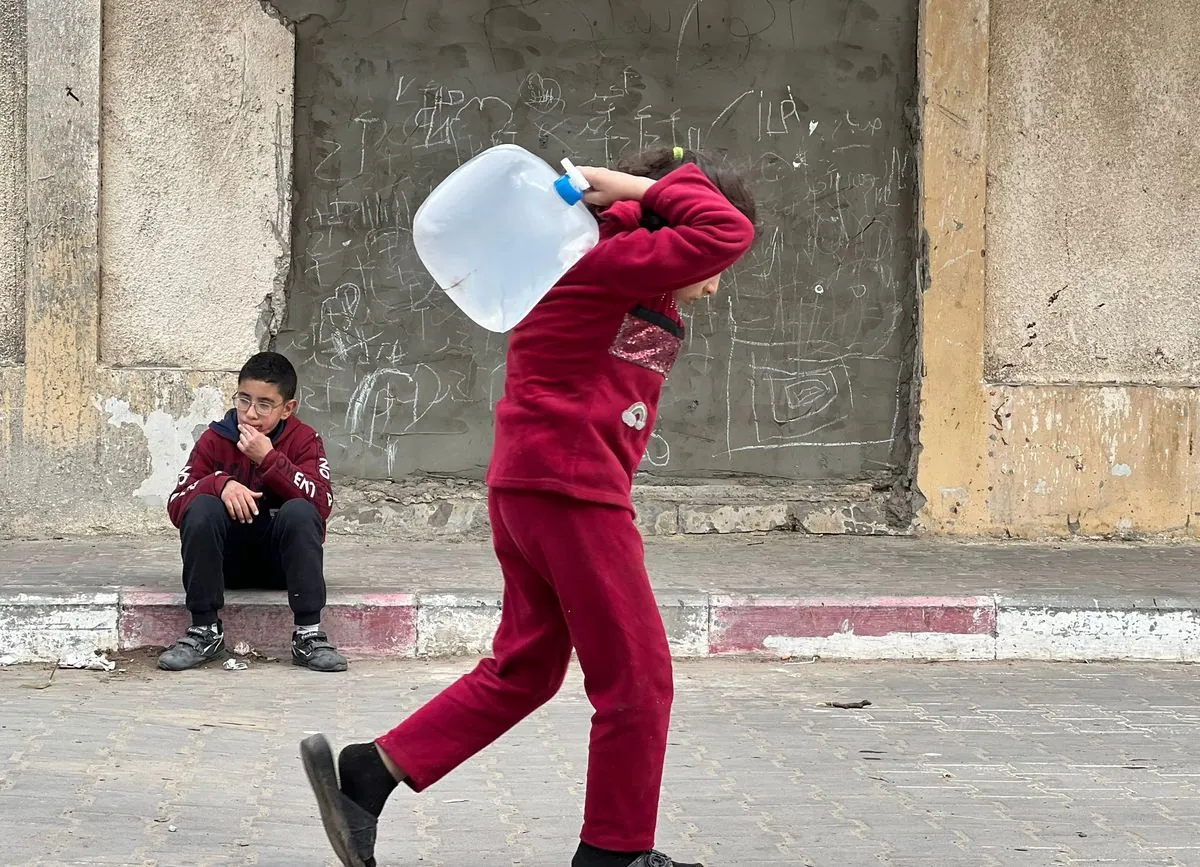Gaza's Children Forced to Work as Education Crisis Deepens
In war-torn Gaza, children are compelled to work instead of attending school. With 90% of schools damaged and 1.9 million displaced, the education crisis threatens long-term consequences for Gaza's youth.

In the Gaza Strip, a territory grappling with the aftermath of a year-long conflict, children are facing an unprecedented education crisis. As the new academic year begins, instead of returning to classrooms, many young Palestinians find themselves working to support their families' survival.
Ezz el-Din Qudeh, a 14-year-old resident of Khan Younis, exemplifies this dire situation. Along with his siblings, including a 4-year-old, he collects rubble from destroyed buildings to sell for grave construction. "We're working at something beyond our capacities. We are forced to in order to get a living," Qudeh explains, highlighting the stark contrast between his reality and that of children in other countries who are pursuing their education.
The ongoing conflict has resulted in the displacement of 1.9 million of Gaza's 2.3 million inhabitants, with many now residing in makeshift tent cities or repurposed schools serving as shelters. This massive displacement, coupled with the destruction of over 90% of Gaza's school buildings, has left 625,000 school-age children without access to formal education for nearly two years.

Humanitarian organizations warn of the long-term consequences of this educational void. Tess Ingram, a UNICEF spokesperson, emphasizes the risks: "The longer a child is out of school, the more they are at risk of dropping out permanently and not returning." The lack of education not only hampers cognitive and social development but also increases the likelihood of child labor and early marriage.
"They were outstanding students. We raised them well."
The Qudeh family's story is a poignant illustration of the crisis. Living in a tent within a cemetery, the children work daily to earn a meager income of about 15 shekels ($4) by selling concrete powder for grave construction. Their father, injured in a previous conflict, watches helplessly as his children suffer from exhaustion and physical pain.
Despite these challenges, the desire for education remains strong among Gaza's youth. Before the conflict, Gaza boasted a high literacy rate of nearly 98%, reflecting the cultural importance of education among Palestinians. UNICEF and other aid agencies have established 175 temporary learning centers, serving about 30,000 students. However, these efforts face significant obstacles, including shortages of basic supplies like pens and paper.
The psychological impact on children is profound. Many exhibit emotional changes, becoming withdrawn or easily agitated. UNICEF reports that almost all of Gaza's 1.1 million children are believed to need psychosocial support.
The education crisis extends beyond Gaza to the West Bank, where increased movement restrictions and security operations have led to frequent school closures and reduced attendance.
As the conflict continues, with over 40,000 Palestinian casualties reported by Gaza health officials, the future of education in the region remains uncertain. The destruction of schools and universities, coupled with the ongoing humanitarian crisis, presents a monumental challenge to rebuilding the education system and securing a brighter future for Gaza's children.


































